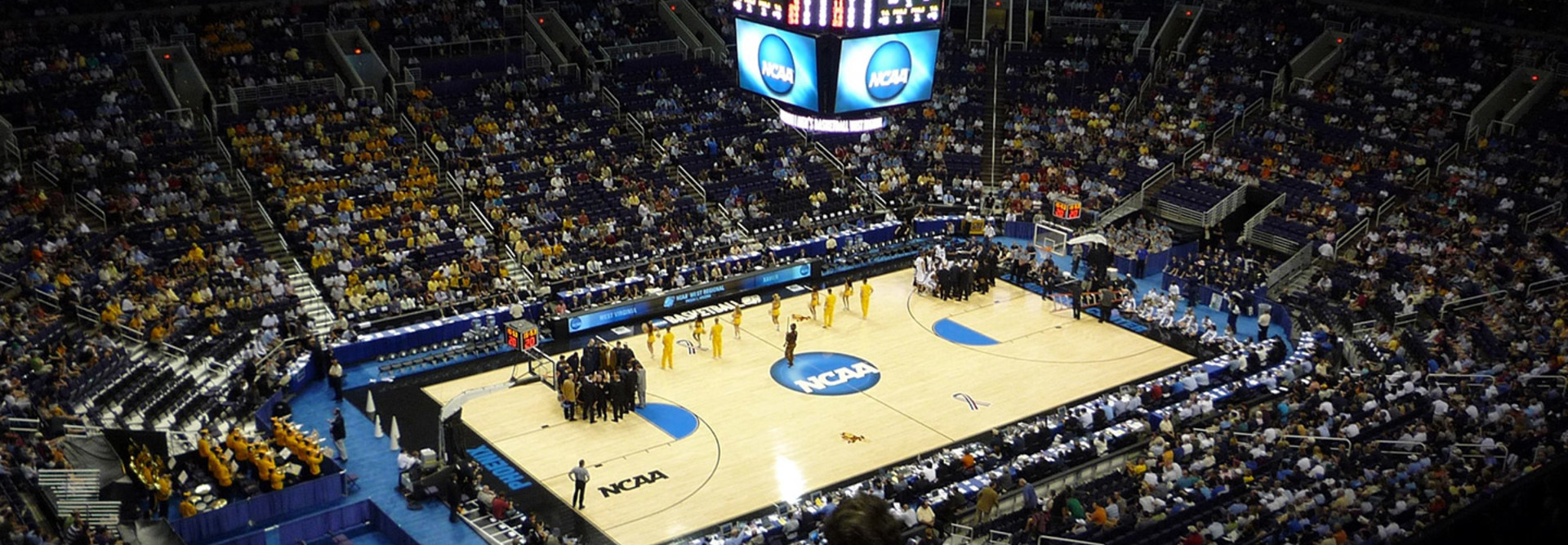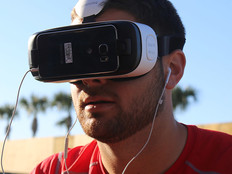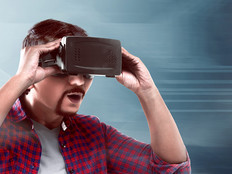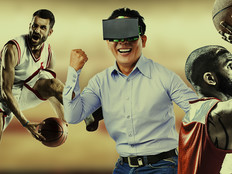As March Madness Wraps Up, Virtual Reality in College Basketball Starts to Mature
The Final Four is coming, and it will be in virtual reality. But is that really a surprise? In 2017, it’s not — and that’s the point. VR in college basketball is starting to come of age.
Although the modern spin on VR in sports and entertainment is a few years old now, relative to other technologies like streaming video and wirelessly controlled displays, it’s still in its infancy. Yet the hardware used to support VR is maturing and so are the use cases for it in college basketball.
This time last year, VR was being bandied about as a tool for training college basketball players. While that is still occurring, it is more likely to be used as a recruiting tool for prospective students. Additionally, viewing live games in VR gets a lot of hype, but VR companies are also using the technology to give fans exclusive behind-the-scenes content they cannot get from the traditional broadcast.
“I think you’ll see, when you look at any of the VR companies that are providing the ability to experience the content, from [a user] experience standpoint, we want deeper access and richer engagement with our favorite team, and anything that can give us that, we’re interested in,” says Brendan Reilly, CEO of Eon Sports VR.
The Evolving Fan Experience with VR
Streaming live events in VR is still the main event for leagues and teams. Last week the NCAA announced that March Madness Live, managed by Turner Sports in partnership with CBS Sports and the NCAA, would partner with Intel to offer VR coverage of the 2017 NCAA Division I Men’s Basketball Championship.
The NCAA said that, via its March Madness Live VR application, fans would be able to view Sweet 16 and Elite 8 games, as well as the NCAA Final Four National Semifinals next weekend and National Championship on April 3 from Phoenix. Fans can pay $2.99 per game or $7.99 for all six games and experience fully produced VR coverage, incorporating multiple courtside cameras, sounds from inside the arena and dedicated game commentary.
The NCAA also said that for $1.99 per game, fans can experience VR through a single courtside camera presentation (180-degree live stream) with the same commentary featured on the CBS broadcast.
However, as TechCrunch points out, the app will only work for Samsung devices compatible with the Gear VR headset.
Earlier this month, EON Sports VR and creative agency Twelfthman partnered with Raycom Sports and the Atlantic Coast Conference to live stream in VR the 2017 ACC Men’s Basketball Tournament.
As SportTechie reported before the tournament: “The ACC VR app will carry the ACC Network broadcast, which will include statistics, scores and highlights. Exclusive content via the app will also include virtual reality experiences, front row views, locker room tours, behind-the-scenes footage and other content, either for fans to view with or without a headset.”
Reilly says that EON has seen a “tremendous amount of engagement” with VR content in live sports, “just not where we thought we’d see it.” The ACC tournament experience demonstrated to the company that fans want to use VR less to watch a game for three hours with a headset on and more for experiences that they could never experience before. During the tournament, Reilly says, EON could put fans on the court for the singing of the national anthem, inside a huddle after player introductions, and underneath a basket as a player dunked. “That’s really cool,” he adds.
Over the last nine to 12 months in testing, EON refined what kinds of VR content fans were interested in, according to Reilly. They want access to behind-the-scenes, on-demand content, including highlights.
The two things that matter most to teams and leagues are “eyeballs and engagement,” Reilly says. “As long as you can deliver on those, then that’s something that’s really, really important, and provides value to the broadcaster and media rights holders,” he says.
VR Is Used Less for Training, More for Recruiting
VR is being widely used for training in the National Football League, Major League Baseball and major college football programs. That is largely because the act of throwing a baseball to a batter, a batter hitting a pitch, or a quarterback taking a snap is a highly repeatable action with a largely static environment, Reilly says.
Basketball is a bit more fluid and dynamic, and that makes it more difficult to set up for training.
Andrew Rosner, assistant athletic director at Indiana University, says that it’s “much more difficult” to apply VR training to basketball than it is to football, because there are more “decision points” on a basketball court. “It’s really cumbersome to figure out how to get a camera in all of the places where a student-athlete would be making some type of decision,” he says.
Indiana has embraced VR as a way for fans to experience its basketball games, and in February the university distributed 2,000 adidas VR headsets to students for a game against Northwestern University, as SportTechie reports. However, when it comes to training, Indiana is taking a different approach.
For basketball, the university is looking to use augmented reality via Microsoft’s Holo Lens headset, according to Rosner. The university is still exploring how to use Holo Lens but envisions it being used for individualized training, such as shooting drills, and less about reacting to a defense.
However, Indiana is “absolutely” using VR to recruit potential players, Rosner says. A student built an app that users can experience via Gear VR devices that lets them experience “everything from our facilities to what it’s like being at a game.”









